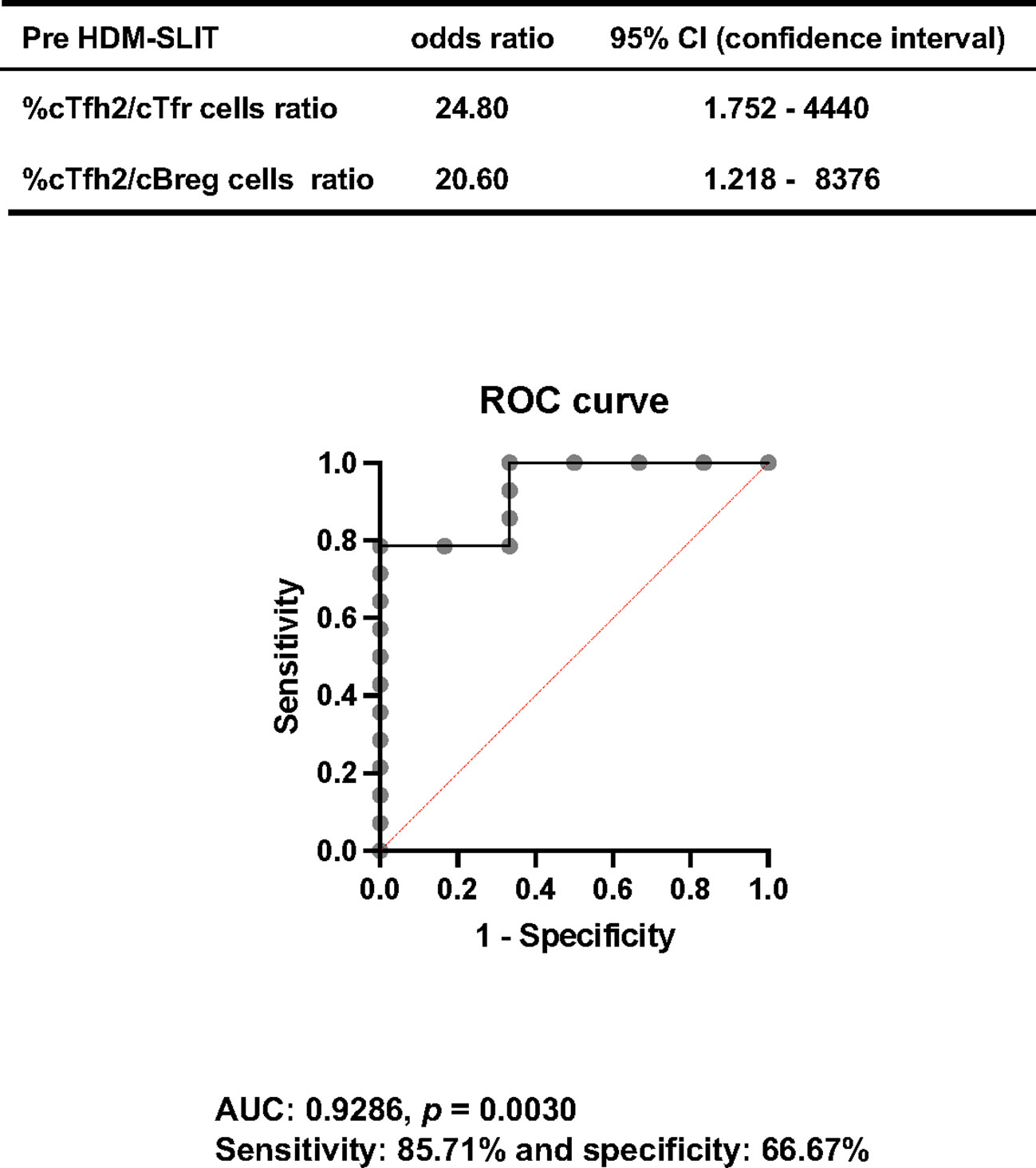Shigehara K, Kamekura R, Ikegami I et al. Front Immunol. 2023 Nov 24;14:1284205. doi: 10.3389/fimmu.2023.1284205.
Abstract
 |
The ratio of cTfh2/cTfr cells and the ratio of cTfh2/cBreg
cells at the start of HDM-SLIT showed significant odds
ratiosby two-way logistic analysis |
The relationships between T follicular helper (Tfh) cells and antigen-specific immunoglobulins (sIgs) in patients with allergic respiratory diseases who are receiving antigen immunotherapy (AIT) have not been fully clarified. Therefore, we started to perform house dust mite sublingual immunotherapy (HDM-SLIT) for 20 patients with atopic asthma comorbid with allergic rhinitis (AA+AR) who were already receiving ordinary treatments including inhaled corticosteroid (ICS). We examined percentages of circulating T follicular helper (cTfh) and regulatory (cTfr) cells and percentages of circulating regulatory T (cTreg) and B (cBreg) cells by FACS and we examined levels of Der-p/f sIgs by ELISA. Based on the symptom score (asthma control questionnaire: ACQ) and medication score ((global initiative for asthma: GINA) treatment step score) in patients with AA, the patients were divided into responders and non-responders. The percentage of cTfh2 cells significantly decreased and the percentage of cTfh1 cells significantly increased within the first year. Der-p/f sIgEs decreased after a transient elevation at 3 months in both groups. Notably, the percentage of cTfh2 cells and the ratio of cTfh2/cBreg cells and Der-p/f sIgEs greatly decreased in responders from 6 months to 12 months. The percentages of cTfr and cTreg cells showed significant negative correlations with the percentage of cTfh2 cells. The percentage of IL-4+ cTfh cells were significantly decreased and the percentage of IFN-γ+ cTfh cells were increased before treatment to 24 months in 6 patients examined (4 responders and 2 non-responders). We performed multi plelogistic regression analysis based on these results, the ratios of cTfh2/cTfr cells and cTfh2/cBreg cells at the start of therapy were statistically effective biomarkers for predicting the response to HDM-SLIT in patients with AA+AR.PDF

No comments:
Post a Comment